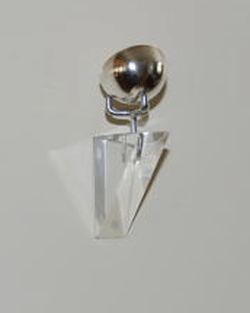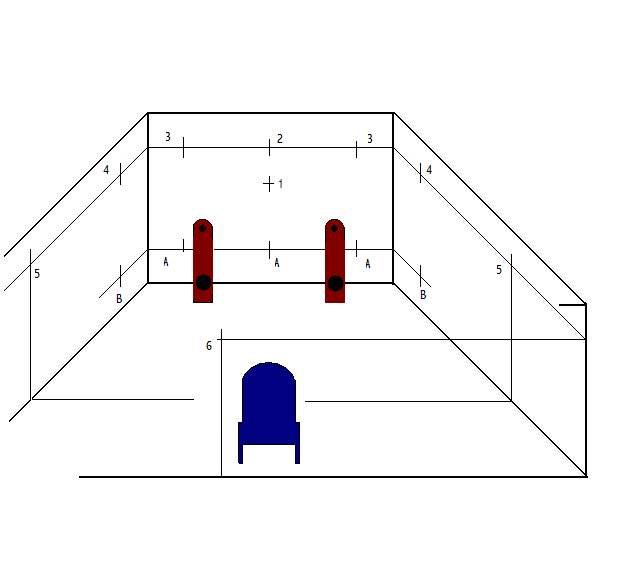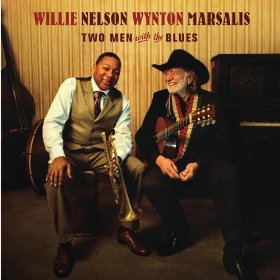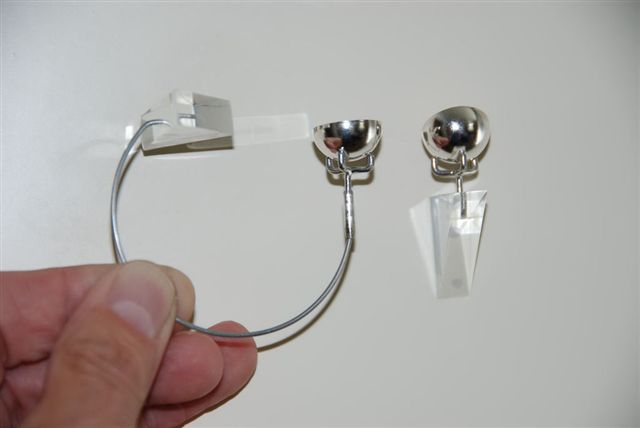Zilplex Resonant Devices

|
| Unforgettable |
|
|
|
November, 2011 |
There are now at least three companies using Tibetan bowls as acoustic room treatment devices: Acoustic Systems International’s Acoustic Resonators, Synergistic Research’s Acoustic Art System (ARTs) or the less expensive ARTs Basiks, and now Zilplex, a startup company in the Netherlands. Tibetan bowls have long been used to create sounds, typically by rubbing a special wand around their rims. These sounds have been used in meditation, relaxation, and even health, but early on I found no use for them as a room treatment. I can certainly understand how the bowls make noise and fully understand that they do resonate, but using them for room treatment seems unexplored. Ted Denny of Synergistic Research says that he did experience Buddhist monks using them to enhance their singing and that first gave him his idea. This however, may just suggest that they are used to enhance certain frequencies. Perhaps, Tibetan bowls do resonate at several frequencies, but if not, their use as room treatments could merely be picking a resonance frequency that is most pleasing and designing Tibetan bowls to resonate at that frequency.
I have heard all three of these devices in “with-and-without” demonstrations. Only the Zilplexes were demonstrated in my listening rooms. I still remember my shock at the Synergistic Research demonstration at the Rocky Mountain Audio Fest several years ago. The impact with them in was striking, but of course, I had no clue as to how they had this impact. Several times I had noted that the Acoustic Systems devices seemed to work in rooms where they were used, but I only once heard them in a demonstration where they were moved about with clear impact.
Before considering the Zilplex devices, I should note that I have tried a full range of room treatments in my listening rooms. I’ve used everything from the old live-end/dead-end rooms to standing devices (such as the Room Lens and Holographs) to quartz resonators and devices using them (such as the Shun Mooks), to diffusers and traps for some frequencies, and electronic equalizations. Most have come and gone often having some modest impact on the sound. I have been using the SR ARTs for several years, however.
All of the Tibetan bowl derived resonators, being small, are not very intrusive and do work quite well, although you will have to put up with non-audiophile friends wanting to know what the cups are all around your room, etc. I have, however, often done “with and without” comparisons for such friends, and they mainly exclaim, “How can they do that!”

The Zilplex units that I am reviewing here represent just another step on the path to seeking the benefit of resonant devices on the wall. I requested review samples having heard about them in an Internet discussion group. Right now, Zilplex has no US distributor and sells through dealers in Europe only. You can, however, buy directly from the manufacturer.
Installation
The package I received included seven “normal” Zilplex units, which consist of a right angle triangle piece of Plexiglas with about one inch sides and about one quarter inch thick with a silver tripod mounted on one of the right angle sides. These tripods hold one half-inch silver hemispheres tipped at about a forty-five degree angle toward the wall. Additionally, there are three “bass unit” Zilplex units that have slightly thicker and taller tripods that hold the same cups at the same angle. Finally, there is one “ceiling unit that has a long silver wire with a tripod at the end that also holds one of the cups, with the cup level with the ceiling and about one quarter of an inch from the ceiling. These eleven devices need to be carefully placed as prescribed by the manufacturer.

As noted and shown in the pictures, all but the ceiling Zilplex sit at a forty-five degree angle on their tripods. Therefore, the top of the cup is dampened much less by the tripod than is the bottom and point in between vary continuously. This maybe how the Zilplexes cover a broad range of frequencies.
I must admit that initially, I tried these in my Texas room but could not install the ceiling Zilplex and two of the three base units had to be in a compromised circumstance with obstructions nearby. I could hear a difference with and without the Zilplexes installed but not much, certainly far short of what I got with my Synergistic Research ARTs supplemented with their Basik ARTs. When I installed all of the units in uncompromised positions in New Mexico with the ceiling Zilplex in position, I was shocked by their impact.
Two summers ago in New Mexico I bought two sets of Synergistic Research ARTs Basiks, with iron cups which are not hand tuned. They are just chromed cups mounted on special nails to their wooden triangles. They also have a smaller bass station that sits on the floor. I was able to live with this small listening room in New Mexico after some experimentation with these Basiks. In reality, I had used only the bass stations from both plus one set of wall units. Having just tried the Zilplexes in my Texas room, I decided to install them in New Mexico. One of the benefits here was the ease of installing the Zilplex ceiling unit, as the ceiling is only eight feet tall. I followed the manufacturer’s recommendation exactly, using positions 4 and B on the side walls rather than 3 and A on the speaker walls (see diagram below). The three bass units go in positions A or B on the chart as well as in the centered position on the speaker wall.
In the drawing the top ring around the room is 86” from the floor and the bottom ring is 14” from the floor. The four Zilplexes in the corner of the speaker and sidewalls are 12” from the corner on either the sidewalls or on the speaker wall. As I said in Texas I had to use them on the speaker wall. Here I tried both and much preferred the sidewalls. Position 1 is centered on the speaker wall and 62.5” off the floor. Position 5 is 20” from the listening position (your ears). The ceiling Zilplex is 6.5’ toward the listening position from the center of the front panels of the speakers and centered. In each case the manufacturer gives you some tolerance, but I put them on the exact spots he recommends. With the exception of the ceiling Zilplex, the identical silver cups are to have their top at a 45º angle to the wall where their mounting Plexiglas triangle is mounted.
Each triangle has three tiny balls of a white material like Blu-Tac to use in mounting them to the wall. The ceiling Zilplex uses the same cup and triangle, but the tripod is much longer and allows the triangle to be mounted with its opening flat to the ceiling. I have had no Zilplex unit fall. It took me about one hour to install these eleven units.
While I installed all of the units before listening, after I sat down, I noticed that the ceiling Zilplex was too much to the right. When I removed it while music was playing, I could hear it not in position. On moving it to the left, I heard a decidedly shifted sound stage. I have never changed the Zilplex positions in New Mexico thereafter.
Listening with the Zilplexes compared to the ART Basiks
The Zilplexes, in position, gave a strikingly open and involving soundstage. I could not help but notice that the soundstage was well beyond the confines of my 10’ wide listening room, especially on live recordings. When I listened carefully, I could hear the nearest three or four feet of the side walls, but beyond that it was the recording venue. This was quite different than what I heard earlier in my larger Texas listening room with compromised placement of the left and right bass Zilplex units and no ceiling unit. Later I noticed an ease to the music and strikingly deep, directional, and defined bass. I had always viewed my small listening room in New Mexico as a major compromise to allow me to escape the summer heat of Texas but still have music. With the Zilplexes, however, I was in a much larger room with excellent acoustics. I am not saying that it is the equal of a larger room, but it is very enjoyable and realistic.
After listening for several weeks to the Zilplexes, I decided to reinstall the six Synergistic ARTs Basiks I used last summer. Since I had changed the speakers’ location somewhat, this required minor adjustments of the Basiks on the sidewalls. I ended up spending a week doing many minor adjustments of these wall units as well as the two bass stations that I use. Ultimately, I was very satisfied with the Basiks and their impact on the sound in my small room.
 The Zilplexes and the Synergistic Research Basiks give very different perspectives to the sound. Perhaps most notably, the Basiks could not remove the walls at the speaker end of my room. On Diana Krall’s “Case of You”, from herLive in Paris CD [Verve 00006RG7F (Canadian Bonus Track)], she sounded very good and closely miked. But with the Zilplexes, you could hear her voice decay through the hall, and she and her piano are surrounded by the stage, not limited by my ten foot wide listening room. The same was true of Frank Sinatra and Count Basie’s, “I Got a Crush on You” from their, Sinatra At The Sands [Vicy 94366 Japan SHM], where the horn player on the left side interacts with Sinatra’s vocal, sounds to be about ten or fifteen feet away and outside my left walls. The Basiks by contrast, give you basically the perspective of the microphones, very close up and detailed, but with a less defined soundstage.
The Zilplexes and the Synergistic Research Basiks give very different perspectives to the sound. Perhaps most notably, the Basiks could not remove the walls at the speaker end of my room. On Diana Krall’s “Case of You”, from herLive in Paris CD [Verve 00006RG7F (Canadian Bonus Track)], she sounded very good and closely miked. But with the Zilplexes, you could hear her voice decay through the hall, and she and her piano are surrounded by the stage, not limited by my ten foot wide listening room. The same was true of Frank Sinatra and Count Basie’s, “I Got a Crush on You” from their, Sinatra At The Sands [Vicy 94366 Japan SHM], where the horn player on the left side interacts with Sinatra’s vocal, sounds to be about ten or fifteen feet away and outside my left walls. The Basiks by contrast, give you basically the perspective of the microphones, very close up and detailed, but with a less defined soundstage.
The top end on the Zilplexes is more airy than that of the Basiks and the bottom end of the Basiks is more bombastic, although the deep bass is better on the Zilplexes.  On Willie Nelson and Wynton Marsalis’ “Ain’t Nobody Business” and “Basin Street Blues”, from Two Men With The Blues [Blue Note Records TOCP-70541 Japan] the trumpet and drums are very strong and real, especially with the Basiks, but ripeness of the trumpet is not really there in comparison to the Zilplexes. Also again, the Zilplexes give you a very broad and defined sound stage and Wynton’s comments at several points can be understood clearly.
On Willie Nelson and Wynton Marsalis’ “Ain’t Nobody Business” and “Basin Street Blues”, from Two Men With The Blues [Blue Note Records TOCP-70541 Japan] the trumpet and drums are very strong and real, especially with the Basiks, but ripeness of the trumpet is not really there in comparison to the Zilplexes. Also again, the Zilplexes give you a very broad and defined sound stage and Wynton’s comments at several points can be understood clearly.
Considering the resolution differences between the Zilplexes and Basiks, I have some difficulty in resolving what I hear. There is greater decay and hall feel with the Zilplexes but greater ability to hear some details in complex passages with the Basiks.
Overall, my money has to go to the resonators that widen my narrow listening room. Certainly, this is one instance in which I would have to say that your experiences might differ. In my big Texas listening room and with my inability to install the Zilplex ceiling unit, I preferred the Synergistic ARTs, the original ARTs, and not the lesser Basiks. Maybe this was the Zilplexes not being fully used; maybe it was the original ARTs being better than the Basiks. We will now turn to these questions.
Installing the Zilplexes in my big room
Finally, I have been fully able to install the Zilplexes in my much larger Texas room. Here I am comparing them with the full-blown Synergistic Research ARTs system. I had to move a subwoofer and a rack with a record cleaner on it to allow placement of the two sidewall bass units. I also had to go to the top of my stepladder to install the Zilplex ceiling unit on my 11 and half foot tall ceiling. It was well worth the effort.
The removal of the front of my listening room again was evident. With my eyes closed, by brain says that were I to walk forward about four feet, I would fall out of my room! Forward of that I would enter into the recording venue with greater width and height than my listening room. With this comes a very realistic sound stage, of course, with rounded impressions of singers and a real sense of the location of the orchestra or band behind them. Additionally, you get an extended and sweet top end and a defined and deep bass.
I must say that without the two bass units at the speaker end of the room on the sidewalls and the ceiling unit in place, I did not get this performance. Additionally, I had erred in placing the sidewall unit to my right and high on the wall; this gave me a less realistic impression on that side. When I got that unit properly placed, all was well.
Conclusion
Certainly Tibetan bowls are here to stay for a while in my listening rooms. I still wonder about the size of these bowls used in room treatment. The Acoustic Systems and Zilplexes are quite small at about ½ inch in diameter, but the Acoustic Systems resonators are much heavier. The Basiks are 1 5/8” in diameter. The smallest Tibetan singing bowls I have found are about 4 3/8” inches in diameter. What would larger bowls sound like mounted on the walls? Their tone is bound to be lower, and would their resonance standout? Could they support a broader range of resonances or would the bass just get deeper? Perhaps the Synergistic Research ARTs Basiks have profound bass and the Zilplexes better top end is because of their size difference.
 I certainly will not be without the Zilplexes in my rooms and thereby nominate them as a Most Wanted Component for 2011!. Wiebe Greydanus of Zilplex no doubt has put many hours of experimentation into the Zilplexes, and it is quite audible. I would strongly suggest closely following his instruction at least as a first effort.
I certainly will not be without the Zilplexes in my rooms and thereby nominate them as a Most Wanted Component for 2011!. Wiebe Greydanus of Zilplex no doubt has put many hours of experimentation into the Zilplexes, and it is quite audible. I would strongly suggest closely following his instruction at least as a first effort.
I need to add a final note. In New Mexico, I noticed that one of my Zilplex’s cups was no longer at the 45º angle. When I looked at the rest, many were close to level, especially those at the top of the room. The ceiling Zilplex was still level. I suspect that either vibrations in my house or of the music causes them to slip down. They do seem to want a more level position. Zilplex says this is normal. When I repositioned them, the sound improved.
With one week since I installed them in my Texas room, some of the cups have also moved toward being level. Here it seems somewhat random around the room. I was very mindful of having the 45º angle in setting them up. I don’t think it is vibrations in the house as Zilplex seemed nonplussed by my saying they moved toward level. Again, I did notice a definite improvement when I set them back to the proper position. It would be great were Zilplex to make a correction that stopped this movement but was not detrimental to the improvement that these device make. But I guess it is part of the cost of these devices to have to occasionally reposition the cups to be at the 45º angle.
I guess this suggests that other things, such as placement, might be critical to getting the maximum from the Zilplex units. I have little engaged in this as yet.

![]()
Price: $2,760.00/per eleven unit set plus shipping and duties from Netherlands. The three different pieces are available separately.
Webpage: http://zilplex.com
Email: w.greydanus@kpnplanet
norm luttbeg
![]()
Don’t forget to bookmark us! (CTRL-SHFT-D)
Stereo Times Masthead
Publisher/Founder
Clement Perry
Editor
Dave Thomas
Senior Editors
Frank Alles, Mike Girardi, Russell Lichter, Terry London, Moreno Mitchell, Paul Szabady, Bill Wells, Mike Wright, and Stephen Yan,
Current Contributors
David Abramson, Tim Barrall, Dave Allison, Ron Cook, Lewis Dardick, John Hoffman, Dan Secula, Don Shaulis, Greg Simmons, Eric Teh, Greg Voth, Richard Willie, Ed Van Winkle, Rob Dockery, Richard Doron, and Daveed Turek
Site Management Clement Perry
Ad Designer: Martin Perry







Be the first to comment on: Zilplex Resonant Devices